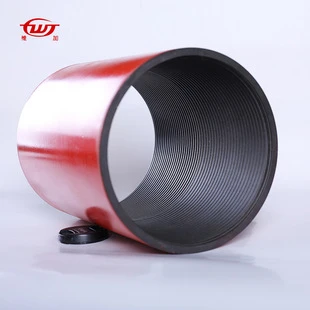- Afrikaans
- Albanian
- Amharic
- Arabic
- Armenian
- Azerbaijani
- Basque
- Belarusian
- Bengali
- Bosnian
- Bulgarian
- Catalan
- Cebuano
- Corsican
- Croatian
- Czech
- Danish
- Dutch
- English
- Esperanto
- Estonian
- Finnish
- French
- Frisian
- Galician
- Georgian
- German
- Greek
- Gujarati
- Haitian Creole
- hausa
- hawaiian
- Hebrew
- Hindi
- Miao
- Hungarian
- Icelandic
- igbo
- Indonesian
- irish
- Italian
- Japanese
- Javanese
- Kannada
- kazakh
- Khmer
- Rwandese
- Korean
- Kurdish
- Kyrgyz
- Lao
- Latin
- Latvian
- Lithuanian
- Luxembourgish
- Macedonian
- Malgashi
- Malay
- Malayalam
- Maltese
- Maori
- Marathi
- Mongolian
- Myanmar
- Nepali
- Norwegian
- Norwegian
- Occitan
- Pashto
- Persian
- Polish
- Portuguese
- Punjabi
- Romanian
- Russian
- Samoan
- Scottish Gaelic
- Serbian
- Sesotho
- Shona
- Sindhi
- Sinhala
- Slovak
- Slovenian
- Somali
- Spanish
- Sundanese
- Swahili
- Swedish
- Tagalog
- Tajik
- Tamil
- Tatar
- Telugu
- Thai
- Turkish
- Turkmen
- Ukrainian
- Urdu
- Uighur
- Uzbek
- Vietnamese
- Welsh
- Bantu
- Yiddish
- Yoruba
- Zulu
casing collar
Understanding Casing Collars in Oil and Gas Drilling
In the intricate domain of oil and gas drilling, various components play a crucial role in ensuring the safety, efficiency, and effectiveness of operations. One such critical element is the casing collar. Casing collars are integral parts of the casing string, which is the series of pipes installed in the borehole to stabilize the wellbore and isolate different geological formations. This article will delve into the importance, functions, and types of casing collars, highlighting their indispensable role in drilling operations.
What Are Casing Collars?
Casing collars are specialized fittings typically found at regular intervals along the casing string. They serve several purposes, primarily related to well integrity and the operational efficiency of drilling operations. Generally, these collars are thicker than the casing pipe itself and possess a greater outer diameter, which makes them more robust and durable. Their design often includes features that facilitate the connection of various components, such as perforation tools or cementing equipment.
Functions of Casing Collars
1. Well Integrity The primary function of casing collars is to provide structural support to the casing string, which is essential for maintaining the integrity of the wellbore. This support is vital in preventing collapses or blowouts, which can lead to catastrophic incidents and environmental disasters.
2. Cementing Operations Casing collars are strategically placed to aid in the cementing process. During the cementing of the casing, collars create a mechanical barrier that helps to contain the cement slurry within the annulus. This ensures that the cement properly bonds the casing to the surrounding formation, further enhancing well stability.
3. Installation of Equipment Casing collars often feature threads or slots that allow for the attachment of various tools and equipment, such as packers, perforating guns, and valves. This modularity increases operational flexibility, enabling the drilling crew to adapt to different well conditions or challenges as they arise.
4. Depth Measurement and Control The spacing of casing collars along the casing string can also serve as reference points for depth measurement. Drillers can use these collars to track the positioning of tools and assess the depth of the well accurately.
casing collar

Types of Casing Collars
Casing collars come in various types, each designed for specific functions and applications
1. Blind Collars These collars do not have any openings and are primarily used to provide structural support. They serve as spacers between joints of casing, maintaining the overall strength of the casing string.
2. Perforated Collars These collars include openings or perforations that allow cement to flow through, facilitating better bonding with the geological formations. They are commonly used in areas where cementing efficiency is crucial.
3. Screw-On Collars These collars feature threaded connections that allow for easy attachment and detachment. They are utilized when equipment changes are frequent, providing flexibility during drilling operations.
4. Centralizer Collars Equipped with arms or pads, these collars help to centralize the casing string within the borehole, ensuring even cement coverage and preventing uneven bonding that could compromise well integrity.
Conclusion
Casing collars are vital components in the oil and gas drilling industry, playing a significant role in ensuring well integrity, facilitating cementing operations, and providing a means of attaching various tools and equipment. Their various types cater to different needs, highlighting the customized approaches required in modern drilling operations. As technology continues to evolve, the design and functionality of casing collars will likely advance, promoting even greater safety and efficiency within the industry. Understanding their importance is crucial for anyone involved in drilling and completion activities, as these small yet essential pieces significantly impact the overall success of well operations.
-
Tubing Pup Joints: Essential Components for Oil and Gas OperationsNewsJul.10,2025
-
Pup Joints: Essential Components for Reliable Drilling OperationsNewsJul.10,2025
-
Pipe Couplings: Connecting Your World EfficientlyNewsJul.10,2025
-
Mastering Oilfield Operations with Quality Tubing and CasingNewsJul.10,2025
-
High-Quality Casing Couplings for Every NeedNewsJul.10,2025
-
Boost Your Drilling Efficiency with Premium Crossover Tools & Seating NipplesNewsJul.10,2025







